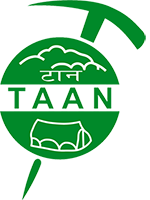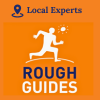
Best Peak Climbing Season In Nepal

Best Peak Climbing Season In Nepal
swotah travel
2823
29, 12 2022
Climbing a peak in Nepal can be a challenging and rewarding experience. Nepal is home to some of the highest and most beautiful mountains in the world, including Mount Everest, the highest mountain on Earth. Many people visit Nepal each year to attempt to climb these peaks, and there are several options for those interested.
If you plan to climb a peak in Nepal, it is important to be in good physical condition and have experience with high-altitude mountaineering. You should also be prepared for the challenges of climbing in a foreign country, including potentially difficult travel conditions and communication barriers.
To climb a peak in Nepal, you will need to obtain a climbing permit from the Nepalese government. This process involves submitting an application and paying a fee. You also need to hire a guide and porters and secure the necessary equipment and supplies. It is recommended to go with a reputable trekking or mountaineering company that can help you with the necessary arrangements and provide support during the climb. They will be able to help you choose a peak that is appropriate for your experience level and physical fitness.
Climbing a peak in Nepal can be a once-in-a-lifetime experience, but it is important to be prepared and to take necessary precautions to ensure a safe and successful climb. The most important thing is to know about Nepal's season, for you have to choose the best season to start your expedition so that you will avoid any mishaps throughout the trip. We have prepared a draft about the best peak climbing season and some other things you need to know before climbing peaks in Nepal.

What Is the Best Peak Climbing Season in Nepal?
Nepal's best season for peak climbing depends on the specific peak and the region in which it is located. In general, the climbing season in Nepal runs from September to November and from March to May. These months offer the most favorable weather conditions for climbing, with clear skies and relatively low precipitation.
The autumn season (September to November) is considered the best time to climb peaks in Nepal, as the weather is generally clear and stable. The spring season (March to May) is also an excellent time to climb, although the weather can be more unpredictable, and there may be more precipitation. Some peaks, such as Ama Dablam and Island Peak, can be climbed throughout the year.
It is important to note that the weather in the mountains of Nepal can be very unpredictable, and conditions can change rapidly. It is wise to be prepared for a range of weather conditions and to have a backup plan in case the weather does not cooperate.
What Kinds of Activities Can You Do During Peak Climbing Season?
During peak climbing season, there are many activities that climbers can enjoy, depending on their level of experience and skill. Some everyday activities include:
Rock climbing: This is the most popular activity during peak climbing season, and it involves using specialized equipment and techniques to ascend a rock face or cliff.
Bouldering: This is a form of rock climbing that is done on shorter, lower routes without the use of ropes or harnesses.
Ice climbing: This activity involves using specialized ice climbing tools and techniques to ascend frozen waterfalls or ice cliffs.
Canyoneering: This activity involves exploring and descending through canyons and gorges, often using a combination of rappelling, rock climbing, and hiking.
Hiking: Many climbers also enjoy hiking during peak climbing season, allowing them to explore the outdoors and get in shape for more challenging climbing activities.
Backpacking: This activity involves carrying all necessary supplies in a backpack and camping overnight in the wilderness. It can be a great way to combine climbing with an extended outdoor adventure.
Regardless of the activity you choose, it is important to be adequately equipped and trained and follow proper safety procedures.

What Types of Equipment Should You Bring for Peak Climbing?
Peak climbing can be physically and mentally challenging, so it's important to be appropriately prepared and equipped. Get through the following list of some of the equipment you may want to consider bringing on a peak climbing trip:
Climbing boots: These should be comfortable, supportive, and durable. Look for a pair with a stiff sole and good traction.
Crampons: These metal spikes attach to your boots and help provide traction on ice and snow. Ice axe: This tool is used for balance, self-arrest, and climbing on snow and ice.
Rope: A climbing rope is used for protection, rappelling, and other technical climbing situations.
Carabiners: Carabiners are metal loops with a spring-loaded gate that can connect ropes and other climbing gear.
Harness: A climbing harness is worn around the waist and legs to attach the climber to the rope.
Headlamp: A headlamp is a small, portable light that can be worn on your head. It's a good idea to bring one in case you need to continue climbing in the dark.
First-aid kit: A small first-aid kit should include basic supplies such as bandages, gauze, and painkillers.
Water and food: It's essential to stay hydrated and nourished while climbing, so bring plenty of water and high-energy snacks.
Clothing: Dress in layers to adjust to changing temperatures and bring a waterproof outer layer in case of rain or snow.
Remember to bring a map and compass, a personal locator beacon, and a repair kit for any gear that may break or malfunction. Always check the weather forecast and local conditions before starting your voyage, and let someone know your plans in case of an emergency.
How to Acclimatize for Optimal Safety and Enjoyment?
Acclimatization is adjusting to new altitude levels and is essential for optimal safety and enjoyment when traveling to high-altitude locations. When you travel to a higher altitude, the air pressure decreases, meaning less oxygen is available to breathe. This can lead to altitude sickness, ranging from mild to severe, and can be dangerous if not properly managed.
To acclimatize for optimal safety and enjoyment, it is important to follow the following tips:
Take it slow: Your body needs time to adjust when you arrive at a higher altitude, so give it some rest. Avoid strenuous activity and take breaks when you need to.
Stay hydrated: Dehydration can worsen altitude sickness, so drink plenty of water. Avoid alcohol and caffeine, as they can increase dehydration.
Eat well: Eating a healthy, well-balanced diet can help your body adjust during altitude changes. Avoid high-fat or sugary foods, as they can increase your risk of altitude sickness.
Get plenty of rest: Make sure to get enough sleep and rest to allow your body to recover from the stresses of travel and the change in altitude.
Use medications as needed: If you are prone to altitude sickness or are planning to travel to a very high altitude, your doctor may recommend taking medications to help prevent or treat altitude sickness.
Follow their instructions carefully. Following these tips can help your body acclimatize and safely enjoy your time at high altitudes.

Tips for Choosing the Right Routes When Peak Climbing in Nepal
Peak climbing in Nepal can be a rewarding and exciting experience, but choosing suitable routes is essential to ensure a safe and successful climb. We have listed some tips to help you choose the right routes when peak climbing in Nepal:
Consider your skill level and experience: Choose a route that matches your skill level and experience. If you're a beginner, starting with a lower peak or a less challenging route is best.
Research the route: Look for information about the route you're considering, including its length, difficulty, and any potential hazards. This will help you determine if the route is suitable for your abilities.
Consult with a guide or local outfitter: Guides and local outfitters have extensive knowledge of Nepal's various peaks and routes, and they can help you choose the right one for your skill level and goals.
Consider the time of year: Some routes may be more challenging or unsafe to climb during certain seasons due to weather conditions or other factors. Be sure to consider the time of year when choosing a route.
Get in shape: Proper physical conditioning is crucial for peak climbing in Nepal. Be sure to train and prepare yourself physically before attempting a climb.
Plan for contingencies: You should always have Plan B to go with the second plan in case things don't go as planned. This might include an alternative route or a plan to descend if necessary.
Following these tips can help ensure a safe and successful peak climbing experience in Nepal.
FAQs About Peak Climbing in Nepal
What is peak climbing in Nepal?
Peak climbing in Nepal refers to the activity of climbing mountain peaks that are located in Nepal. These peaks range in height from around 5,000 meters (16,400 feet) to over 8,000 meters (26,200 feet) and are popular destinations for mountain climbers worldwide.
What is the process of peak climbing in Nepal?
The process of peak climbing in Nepal typically involves the following steps:
-
Obtaining a climbing permit from the Nepal Mountaineering Association (NMA).
-
Hiring a professional climbing guide and a porter to help with the climb.
-
Going through the necessary training and preparation for the climb.
-
Making the necessary arrangements for transportation, accommodation, and supplies.
-
Setting off on the climb, following a predetermined route to the summit.
-
Returning to base camp after reaching the summit.
Also Read: Climbing Lobuche Peak: Difficulty And Best Time
What are the necessary skills and physical fitness requirements for peak climbing in Nepal?
Peak climbing in Nepal requires a high level of physical fitness and endurance. You should be in good physical condition, with strong legs and a sound cardiovascular system. It is also essential to have some experience in rock climbing or mountaineering, as well as basic knowledge of how to use climbing equipment and follow safety procedures.
What is the best time for peak climbing in Nepal?
The best time for peak climbing in Nepal varies depending on the specific peak and the route you will take. In general, the climbing season in Nepal runs from September to November and from March to May. These months offer the best weather conditions for climbing, with clear skies and relatively mild temperatures.
Also Read: Mount Everest Rainbow Valley: Death Zone of Everest
What is the cost of peak climbing in Nepal?
The cost of peak climbing in Nepal can differ depending on several factors, including the specific peak you are climbing, the length of the climb, the number of people in your group, and the type of services you require. A rough estimate for a primary peak climbing expedition in Nepal can be around $2,000-$3,000 per person, not including the cost of flights and travel to and from Nepal.
What is the highest peak that can be climbed in Nepal?
The highest peak that can be climbed in Nepal is Mount Everest, which stands at an elevation of 8,848 meters (29,029 feet). Mount Everest, the tallest mountain in the world, is located in the Himalayas.
Are there any age restrictions for peak climbing in Nepal?
There are no official age restrictions for peak climbing in Nepal, but climbers are generally recommended to be at least 18 years old. Peak climbing is physically demanding and requires elite physical fitness and endurance, so it may not be suitable for younger or less experienced climbers. Consult a doctor and a professional climbing guide before attempting to climb a peak in Nepal.
NEWSLETTER SIGNUP
Sign up to receive our trip ideas and travel offers!
Get updates and Exclusive Offers up to 20% Discount








